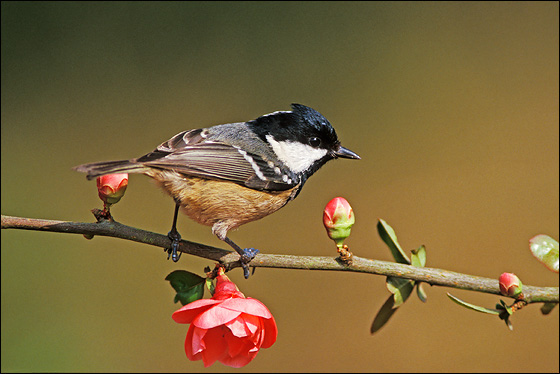Coal Tit (Periparus ater)
Not surprisingly for a bird with such a fine bill (rivalling that of the Goldcrest, living in the same habitat), the Coal Tit takes the smallest average food items of any European tit. These are principally invertebrate in spring and summer, and include aphids, caterpillars and far more spiders than taken by any other species. Seeds of spruce are particularly important, too, and may form the mainstay of a Coal Tit’s diet in the winter. In common with most tits with brown (or nearly brown) plumage, Coal Tits collect and cache large amounts of food, partly for winter survival, and partly to keep them hidden from competitive Blue and Great Tits. That is what a Coal Tit is doing when it visits a bird-table frequented by the other two in great haste, flying in, grabbing a nut and zooming away. It is taking its prize away for storage, privately.
At times Blue and Great Tits can be the bane of a Coal Tit’s life. If all three species mix in winter flocks, Coal Tits are frequently attacked by the other two, and their food stolen. And should they co-exist in the breeding areas, Coal Tits will find themselves literally at the bottom of the tree when it comes to nest sites. Blue or Great Tits take the safer, higher holes, while Coal Tits are condemned to mouse holes and crevices among roots. Deep in coniferous forest, where the others are rare or absent, Coal Tits hold sway, and rarely compete much for territories among themselves.
Coal Tits are more likely to be double-brooded than other members of the family, and they are unique in occasionally making three nesting attempts. It is probable that, where both survive, Coal Tits keep their partners from year to year. They probably remain together in winter flocks, even though not remaining on their breeding territory.
Every so often Coal Tits from northern populations respond to acute food shortages by erupting south and west. But apart from these instances, the Coal Tit is not migratory.

